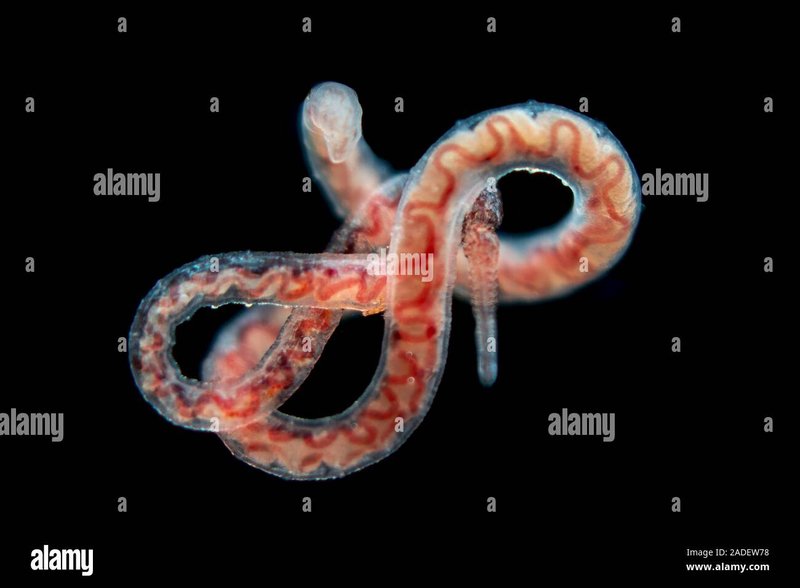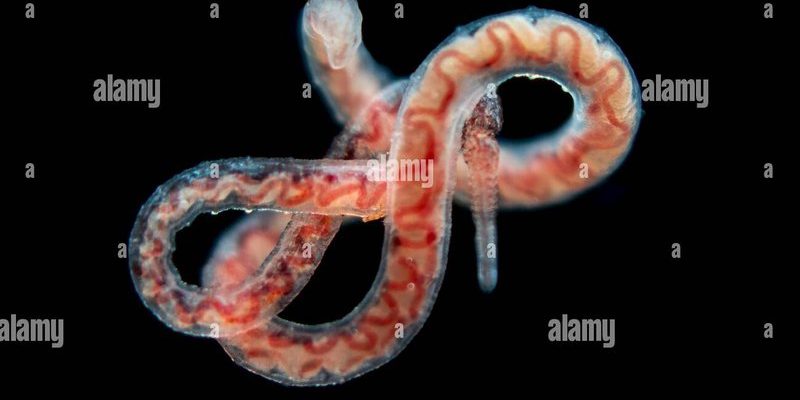
These worms thrive in environments where most organisms might struggle. Found in muddy substrates rich in organic matter, Tubifex worms act like tiny recycling machines. They break down decaying material and help maintain water quality. So, when you’re out by the water and see a bit of murky muck, remember that under that surface, Tubifex worms are hard at work, ensuring a healthier ecosystem for everyone—plants, fish, and the surrounding wildlife.
Let’s dive deeper into the fascinating world of Tubifex worms and discover why they’re so essential to our ecological health.
What Are Tubifex Worms?
To understand their importance, we first need to know what Tubifex worms are. These worms belong to the family Tubificidae and are typically found in freshwater, often in polluted or low-oxygen environments. They are about 2 to 10 centimeters long and can be identified by their reddish-brown color and segmented bodies. What’s striking is how they move; they wriggle and twist through the mud, almost like they’re dancing to an underwater tune.
These worms are filter feeders, meaning they eat by filtering tiny particles from the water and sediment. This process involves pulling in sediment, sifting through it, and extracting nutrients. In essence, they help keep the water clear and clean, which is crucial not just for themselves but for all the life that depends on that water. Think of them as nature’s little cleaning crew, tirelessly working away beneath the surface.
The Role of Tubifex Worms in Ecosystem Health
So, why should we care about these little creatures? One of the key reasons is their role in nutrient cycling. When Tubifex worms digest organic matter, they break it down into simpler compounds that can be used by plants and other organisms. This nutrient recycling process is vital in any ecosystem—it ensures that life can continue to thrive. Without organisms like the Tubifex worm, nutrients would remain trapped in decaying matter, unavailable for use by other organisms.
Furthermore, Tubifex worms contribute to the health of aquatic habitats. They improve water quality by breaking down organic materials and processing potential pollutants. Their activities help stabilize sediment in waterways, reducing erosion and maintaining clarity in the water. Honestly, without Tubifex worms, we could see a decline in fish populations and a deterioration in water quality that impacts entire ecosystems.
How Tubifex Worms Support Aquatic Life
Let’s dig a bit deeper into how these worms support aquatic life. Tubifex worms serve as a food source for many larger animals—think of fish, birds, and even some mammals. These critters rely on worms as a tasty snack, which plays into the broader food web. When Tubifex worms flourish, they provide a steady supply of nutrition for other wildlife, which in turn supports biodiversity.
Consider a pond ecosystem. If Tubifex worms are thriving, you’d likely see a healthier population of fish and aquatic insects, which are essential for the overall health of the pond. They help maintain the delicate balance that keeps an ecosystem thriving. Without them, you might notice algae blooms and declining populations of fish, a clear sign that something has gone awry.
Impact on Water Quality
The influence of Tubifex worms on water quality can’t be overstated. They help keep lakes, rivers, and streams clean by breaking down excess organic material. This natural process is particularly important in areas with high levels of pollution or human activity. When nutrients from fertilizers or waste settle in water bodies, over time, they can lead to harmful algal blooms. However, Tubifex worms play a role in mitigating this by breaking down organic matter before it can contribute to those issues.
Moreover, these worms’ ability to thrive in low-oxygen environments helps maintain a balance in aquatic ecosystems. They essentially act as indicators of water quality; often, their presence suggests a level of biological activity that indicates healthier water conditions. You might say they’re like the canaries in the coal mine, singing their environment’s praises—or warnings.
Utilization in Aquaculture and Research
Tubifex worms aren’t just ecological wonders; they also have practical uses in aquaculture and research. In fish farming, for instance, they provide a natural food source for young fish, which can help boost their growth and health. This makes them beneficial for sustainable fish farming practices, where maintaining healthy populations is key.
In scientific research, Tubifex worms are often studied for their responses to environmental changes, including pollution and sedimentation. The information gained from such studies can help scientists develop better strategies for managing aquatic environments. Essentially, these little worms help us understand broader ecological principles, informing conservation efforts and environmental policies.
Conservation and Future Challenges for Tubifex Worms
Despite their ecological importance, Tubifex worms face challenges due to habitat destruction, pollution, and climate change. Urbanization and agricultural runoff can lead to degraded habitats, threatening the populations of these essential organisms. Conservation efforts must focus on preserving wetlands and clean waterways, ensuring that Tubifex worms can continue their important work.
Moreover, as water temperatures change with climate shifts, the habitats of these worms may also be altered, impacting their population dynamics. Protecting these ecosystems not only secures the future of Tubifex worms but also supports the myriad species that rely on these habitats.
Next time you’re near a body of water, take a moment to think about the Tubifex worm. These small but mighty creatures play a crucial role in keeping ecosystems balanced and healthy. They help with nutrient cycling, improve water quality, and provide food for larger animals. Understanding their ecological importance enriches our appreciation of the interconnectedness of life.
So, while they may not be the most glamorous of creatures, Tubifex worms deserve our respect and protection. By advocating for cleaner waterways and healthier ecosystems, we can ensure that these unsung heroes continue to thrive, supporting life in ways we might never fully see. In the grand scheme of nature, every little worm counts, and in the world of Tubifex, we find a beautiful reminder of how all life is interconnected.

